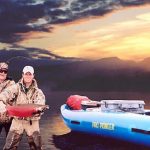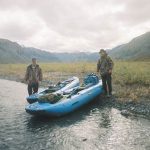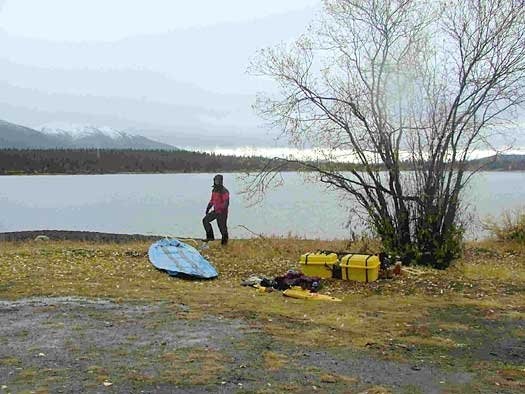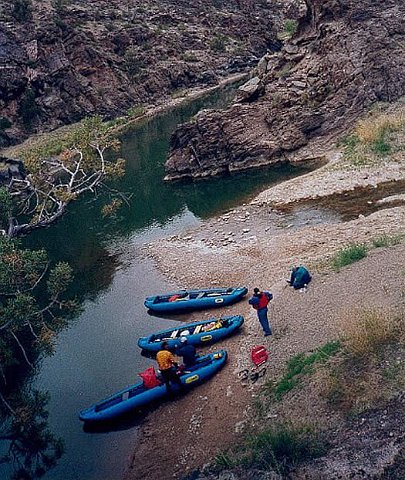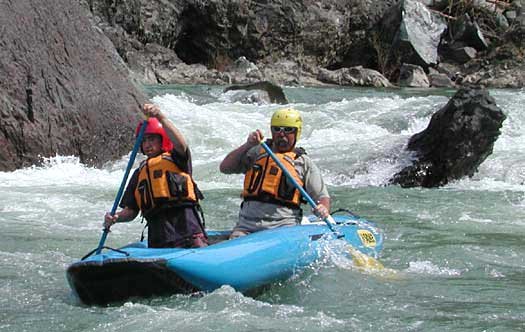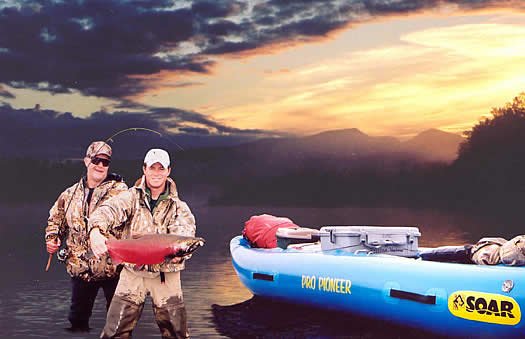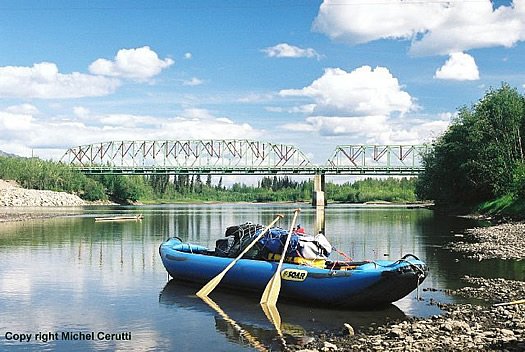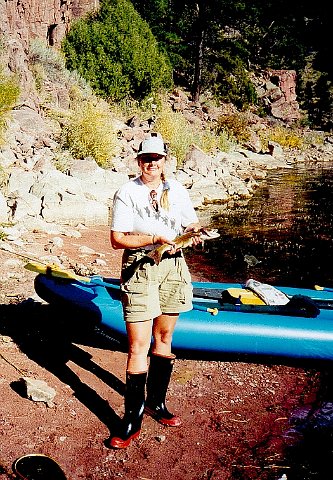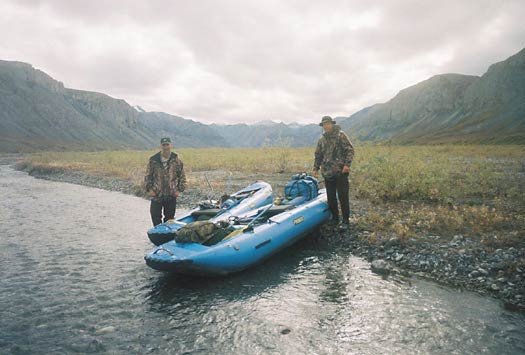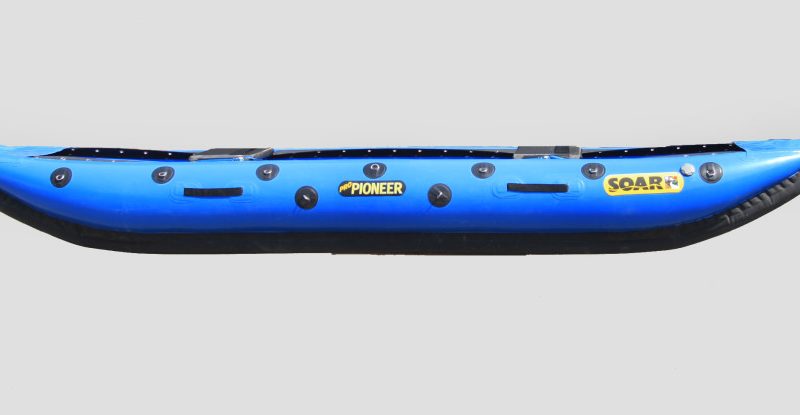Ross River 2004
In September of 2004, Karl Gerrand and I took my SOAR 16 on a 200 km float trip down the Ross River, in east central Yukon. We started our descent at Sheldon Lake on the North Canol Road, and took out at the mouth of the Ross where it enters the Pelly. Although the North Canol Road roughly parallels the river, the river is remote, with few paddlers. During our 5 days on the river, we saw no evidence of anyone else, other than part of a cigarette package on a portage trail that looked several years old. Local residents near our takeout didn’t remember there having been any descents of the river in the last couple years.
Our trip started in the rain, and we experienced light rain at least once every day, but for the most part, the weather was reasonable. Temperatures were several degrees above freezing during the day, and typically fell below freezing at night. The mountain tops were snow covered, but in the valley, the trees still had some leaves.
We put in at Sheldon Lake, and paddled across the lake, then across Field Lake, down the short stretch of river to Lewis Lake, and across it as well before getting into the river proper. Below the lakes, the river is swift, with lots of riffles and low grade rapids for 50 km, including Prevost Canyon and Skookum Rapids, the two most technical portions of the whole descent. The next 100 km of the river is mostly flatwater, alternating between slow, deep sections (1-2 metres), and shallower, fast water. In the fast water sections of the river, there are numerous sweepers and snags, making this portion of the descent nearly as challenging as the whitewater. Finally, in the last 30 km of its course, the river speeds up again, and there are a number of boulder bars and rock gardens before the Ross enters the Pelly about 2 km above the town of Ross River.
The river and topography vary wildly from one section to the next. Near Sheldon Lake, high, steep mountains predominate. They give way to lower, treed slopes, then swampy lowlands, and finally back into canyons and high cutbanks before the end of the trip. Along the way, we passed through a number of burned out areas, some of it recent, some from years ago.
The highlight of the trip was the wildlife. We saw 2 grizzly bears, numerous moose, lots of beaver, ducks, and a wolf pack. The sandhill crane migration was on, and thousands of cranes flew over us, mostly in the evening. A caribou walking through our camp woke me one night as well. The SOAR allowed us to drift in tight to many of the animals, allowing us to get some fantastic pictures. In particular, moose seemed to mostly disregard us until we were inside of 50 metres. We called one bull in, and it came within 5 metres before we scared it off.
The only issue we had with the SOAR was attempting to install a patch. On the first evening, we discovered I had managed to get a pinhole puncture inside the boat while fishing the previous week, and hadn’t noticed it until we were on the Ross. The patch failed due to the cold, wet conditions under which it was installed. Subsequent repairs made following our return home were successful.
The SOAR has been a great purchase. I spent far more time in it this summer than I expected. Thanks.
Trevor Pizzey
Portage la Prairie, MB

